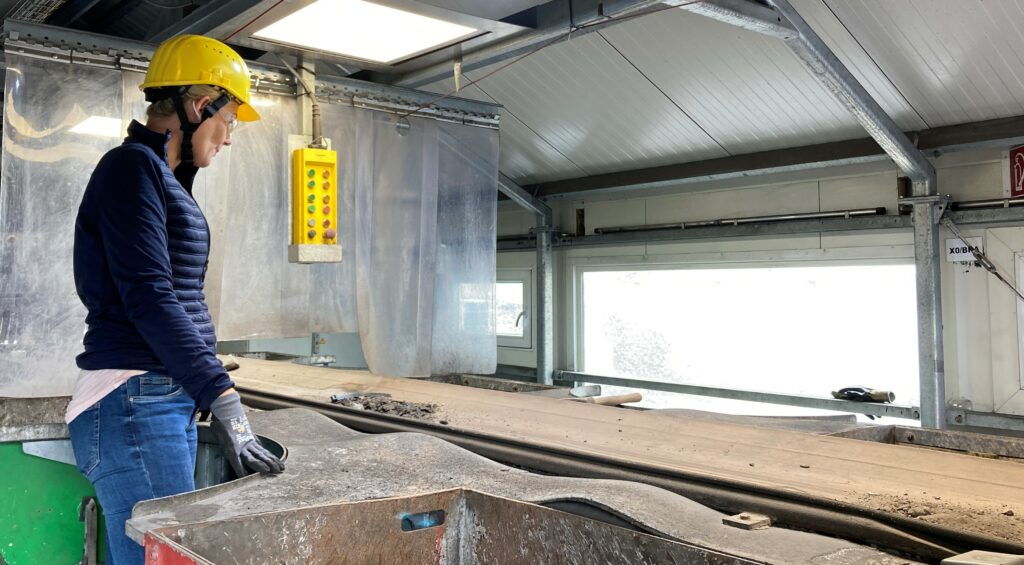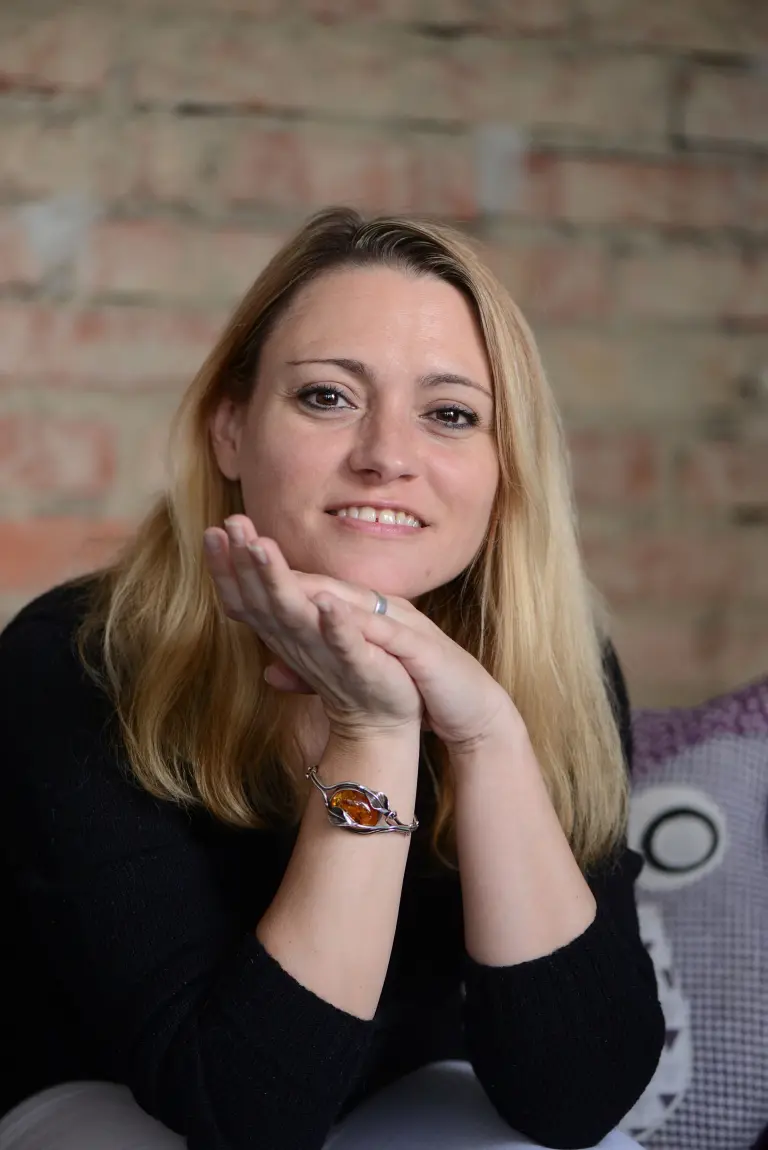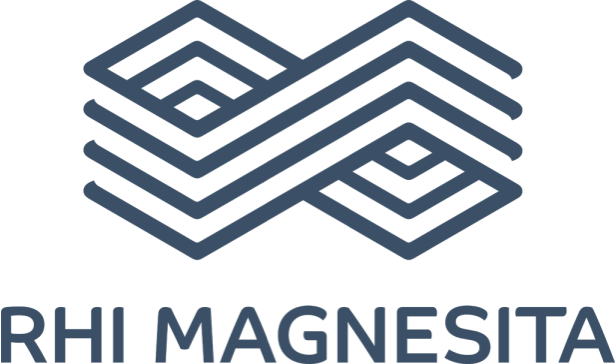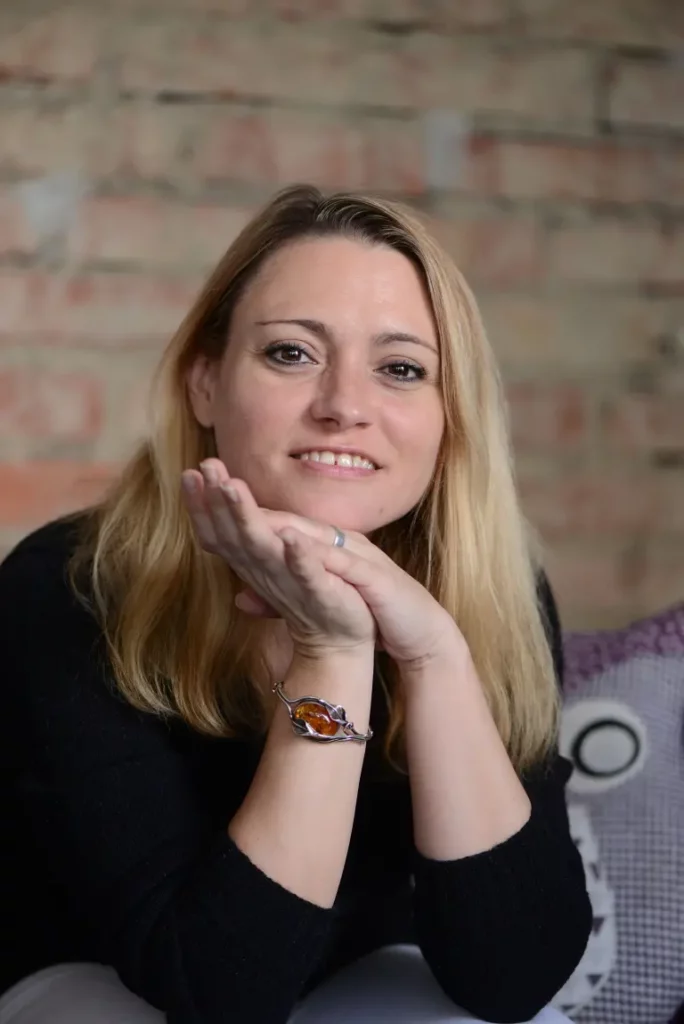A Visit to the Recycling Center

Yesterday I paid a visit to the RHI Magnesita Recycling Center in St. Barbara im Mürztal. Like many of our research activities, it’s located in Styria, one of Austrian’s most beautiful states. The Center, stationed in the district Mitterdorf, was opened in April (here is a video in GER about the opening with Austrian Vice-Chancellor Werner Kogler). It is here where all our efforts shall be put to good use – first in an experimental phase.
The Recycling Center is managed by Heidrun Scheikl. Yesterday, she and Sandra Koenigshofer, one of RHI Magnesita’s scientists, gave me a tour. Heidrun explained that they receive mostly used refractory material from the steel, cement and glass industry and prepare it for a reuse. They plan to process 10.000 tons already this year but with the new sorting equipment they hope to be able to deal with much more.
When Heidrun and her team receive deliveries of used refractory products – which are technically classified as non-hazardous waste – the first step is always checking and documenting. Then the material is determined by analysing a sample. After that it is getting sorted. With the variety of refractory products and their even broader diversity of components, a lot can come together. To make sure the material does not get mixed, the Recycling Center keeps it in separate labeled storage boxes.
With the new equipment developed in our project, the Center will be able to sort more precise and also to sort far smaller grain sizes than currently. A simpler machine currently already supports the employees in the sorting process. An employee processes 1.5tons of material per hours and sorts it to the best of human ability according to visual criteria. This sorting is made particularly difficult by the fact that the refractory products look different after use, for example the colour of the surface can change. Also, there might be rests of binders or other materials sticking to the bricks. These must be removed before you can go on turning waste into valuable secondary raw material. The new machine will be able to identify the material underneath the surface in the core of the bricks, which solves some of the issues, but it too will have to deal with adhesions of other materials on the surfaces.
Heidrun is looking forward to start trial runs with the new set up and especially to see the additional components in action that are developed in our research project ReSoURCE. She will have to wait a little longer than was originally planned though. The delay is caused due to the shortage of material and components caused by the pandemic. Also, we have to admit, that the machine has gotten more and more complex, too. Anyway, there is no reason to worry as this will not change anything in regard to our schedule.
I am very excited for next week when Volker Moerkens from LSA will present the machine in our project meeting. He will of course share some pictures and more here in our weblog as well.

Author’s Portrait
Carmen Loew
Carmen Loew, Magistra Artium, is the project ReSoURCE’s science communicator. She studied Archaeology at the Universities of Saarbrücken and Bamberg and managed projects in research and rescue archaeology in Germany and France before she focused on science communication in 2015. She is a certified PR manager, Fundraising manager, Marketing & Sales assistant, and cultural educator. Her (research) interests are science communication and outreach, crisis communication as well as intercultural communication.
Partner

